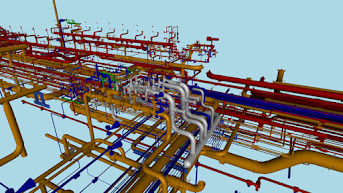The Future of Engineering: Point Cloud to BIM
The engineering and construction industry is undergoing a digital revolution, and Point Cloud to BIM services are leading the way. By combining 3D laser scanning with BIM modeling, engineers, architects, and contractors can create accurate, intelligent, and actionable digital models of real-world structures.
What is Point Cloud to BIM?
Point Cloud to BIM is the process of converting real-world building or site data into detailed BIM models. Using 3D laser scanners, millions of data points, called a point cloud, are captured to represent the exact dimensions, shape, and location of objects. This data is then transformed into a digital model using BIM software, enabling precise planning and reducing errors in construction.
Benefits of Point Cloud to BIM Services
1. Enhanced Accuracy and Precision
Traditional surveying methods often risk errors and delays. Point Cloud to BIM ensures high accuracy by capturing real-world data for precise modeling.
2. Time and Cost Efficiency
Creating 3D BIM models from point clouds saves significant time and cost. Teams can plan, analyze, and make decisions faster without rework.
3. Seamless Renovation and Retrofitting
For existing structures, Point Cloud to BIM services allow engineers to capture as-built conditions and plan renovations or expansions accurately, minimizing disruptions.
4. Improved Collaboration
BIM models derived from point clouds are easily shareable across teams. Architects, engineers, and contractors can identify clashes, coordinate work, and improve project outcomes.
5. Sustainable Construction Practices
By reducing material waste, preventing errors, and streamlining planning, Point Cloud to BIM contributes to sustainable and eco-friendly construction projects.
Key Applications Across Industries
- Architectural BIM Services: Model historic and complex buildings for restoration and renovation.
- Construction Projects: Detect clashes and plan intricate structures before construction begins.
- MEP Modeling: Integrate mechanical, electrical, and plumbing systems efficiently.
- Industrial Facilities: Accurately map factories, warehouses, and plants for maintenance, retrofitting, or expansion.
Why Engineers Are Choosing Point Cloud to BIM
The combination of point cloud technology and BIM modeling ensures projects are delivered with precision, efficiency, and collaboration. As more industries adopt digital construction practices, the demand for Point Cloud to BIM services continues to grow, making it a standard in modern engineering workflows.
Conclusion
The future of engineering is digital, and Point Cloud to BIM is driving this transformation. By converting real-world data into intelligent 3D models, engineers and contractors can build smarter, safer, and more efficiently. Investing in these technologies ensures projects are future-ready, accurate, and sustainable.
FAQs
1. What is the main purpose of Point Cloud to BIM?
Point Cloud to BIM converts real-world building data into accurate 3D BIM models, improving planning, accuracy, and collaboration across projects.
2. How does 3D laser scanning work for BIM modeling?
3D laser scanners capture millions of data points of a structure, creating a point cloud, which is then transformed into an intelligent BIM model using BIM software.
3D laser scanners capture millions of data points of a structure, creating a point cloud, which is then transformed into an intelligent BIM model using BIM software.
3. Can Point Cloud to BIM be used for existing buildings?
Yes, it is ideal for renovations, retrofitting, or expansions, as it captures precise as-built conditions without disrupting ongoing operations.
Yes, it is ideal for renovations, retrofitting, or expansions, as it captures precise as-built conditions without disrupting ongoing operations.
4. What industries benefit most from Point Cloud to BIM services?
Architecture, construction, MEP services, industrial facilities, and facility management benefit significantly from accurate BIM modeling.
Architecture, construction, MEP services, industrial facilities, and facility management benefit significantly from accurate BIM modeling.
5. How does Point Cloud to BIM improve sustainability?
It reduces errors, minimizes material waste, and improves resource planning, supporting more eco-friendly and sustainable construction practices.
It reduces errors, minimizes material waste, and improves resource planning, supporting more eco-friendly and sustainable construction practices.


Comments
Post a Comment